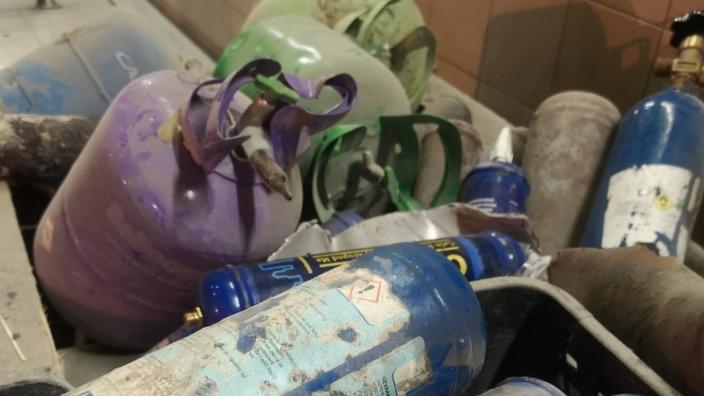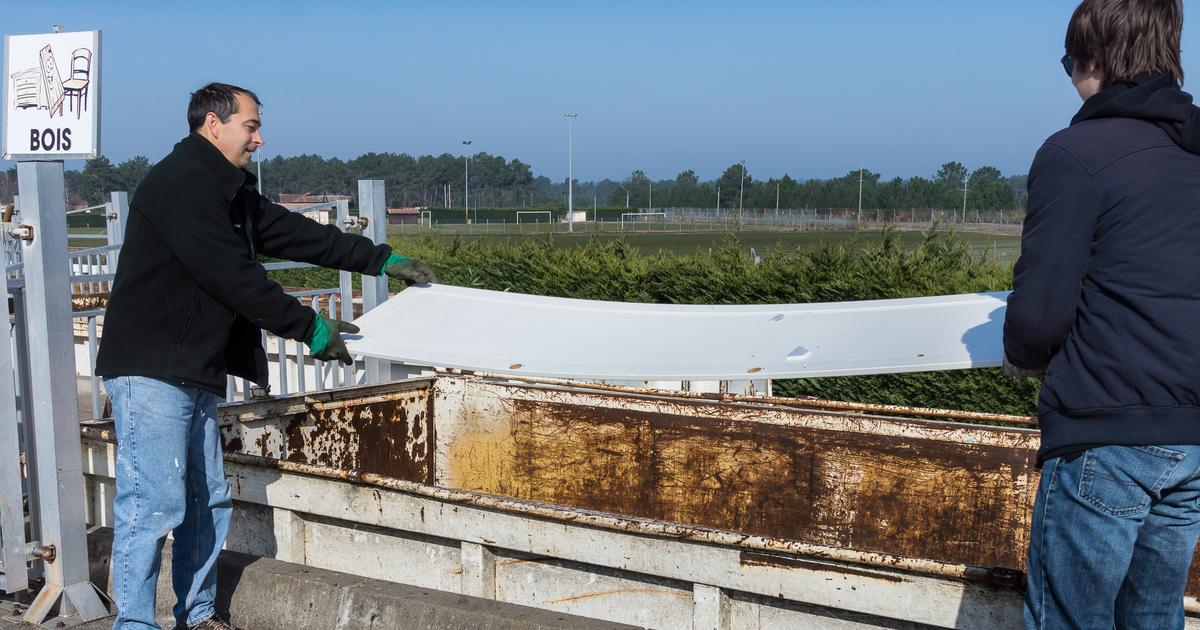For several months, waste treatment and recovery plants have suffered the consequences of the increase in the consumption of nitrous oxide cylinders.
This gas, first used in industry or in the restaurant sector, has gradually made its way into student parties, as laughing gas.
Despite the ban on sales to minors and warnings about health risks, the problem persists and creates unexpected difficulties in the waste treatment chain.
Read also: Nitrous oxide, a laughing gas that does not make you laugh at all
"
Small cartridges of a few centimeters are not a problem
" concedes Marie Christine Viratelle, director of the Valo'Marne plant in Créteil.
However, the increasingly used industrial cartridges which are about 50 centimeters in height and 7 to 8 centimeters in diameter can do damage because "
there is always gas inside".
"
The high temperatures reached in the ovens can then lead to the explosion of the carboys."
she explains.
More and more incidents
In the Créteil waste treatment plant, the situation is worrying. 263 carboy bursts have been identified in the plant's ovens since January 2021. "
It's a recent phenomenon, in 2020 there was about one bottle burst every month
", according to Marie-Christine Viratelle, director of the factory. If not all bursts have consequences, some damage the ovens. Broken mechanical parts must then be repaired and the processing lines shut down for two to three days. "
The damage has amounted to more than 600,000 euros
" since the beginning of the year for the Valo'marne plant, reports its director to
Le Figaro
.
Seven stops were thus deplored between January and July 2021 for a total of 20 days of line closures.
These unforeseen events can also have significant consequences for individuals.
Indeed, the incineration of waste allows the production of electricity and water vapor for the heating of certain households which are therefore deprived of it when the treatment lines are shut down.
Read also: Île-de-France: traffic in “laughing gas” dismantled, 1218 bottles seized
The Intercommunal Syndicate for the Treatment of Urban Residues, whose Cristal factory is located in Carrières-sur-Seine, also reports two incidents that occurred earlier in the year. "
We had two explosions of nitrous oxide canisters which led to shutdowns this year
." The solutions to deal with the problem are reduced because no sorting is carried out in the treatment centers. Increased vigilance is however required, explains Émilie Heurtel, director of communications for the site: “
The person who transfers the waste - deposited by the collection trucks - from the pit to the incineration ovens tries to identify the cylinders that may be left behind. 'find there to remove them upstream, but there is no quick fix
”.
The Fedene *, which brings together seven professional unions including the SVDU **, also underlines the extent of the phenomenon at the national level.
Of the few factories that report their figures, 11 technical shutdowns were recorded in June and more than 750 hours of shutdown recorded.
"
The incidents are very concentrated in Île-de-France but the figures are very largely underestimated
", according to the general delegate of the federation, Ghislain Eschasseriaux.
He also explains that the majority of the carboys are collected in the garbage bins placed on the public road.
The cartridges must be taken to a recycling center
In the Valo'Marne plant, other solutions have been put in place to limit the risks, "
patrols are prohibited around the ovens in order to ensure the safety of our employees
" affirms the director. In addition, the plant has invested in "
a tool for identifying bursting phenomena to monitor trends
". It is also considering reinforcing the material of the grids that make up the furnaces in order to limit complete stoppages of the treatment lines. Information remains the key, however, because it would first be necessary to prevent the canisters from ending up in household waste treatment plants and to educate young people about sorting hazardous waste.
The nitrous oxide and helium cylinders must therefore be taken to a waste reception center where a specialized sector is able to ensure proper treatment.
Individuals must not throw them in household waste or in sorting bins.
Read also: In the North, alert on nitrous oxide, the new drug for teenagers
In addition to these risks in waste management, the government site dedicated to drugs, warns against the misuse of nitrous oxide with several health risks such as suffocation or cold burn.
Frequent consumption can also lead to neurological or heart problems.
*
National Federation of Energy Environment Services
**
National union for the treatment and recovery of urban waste








